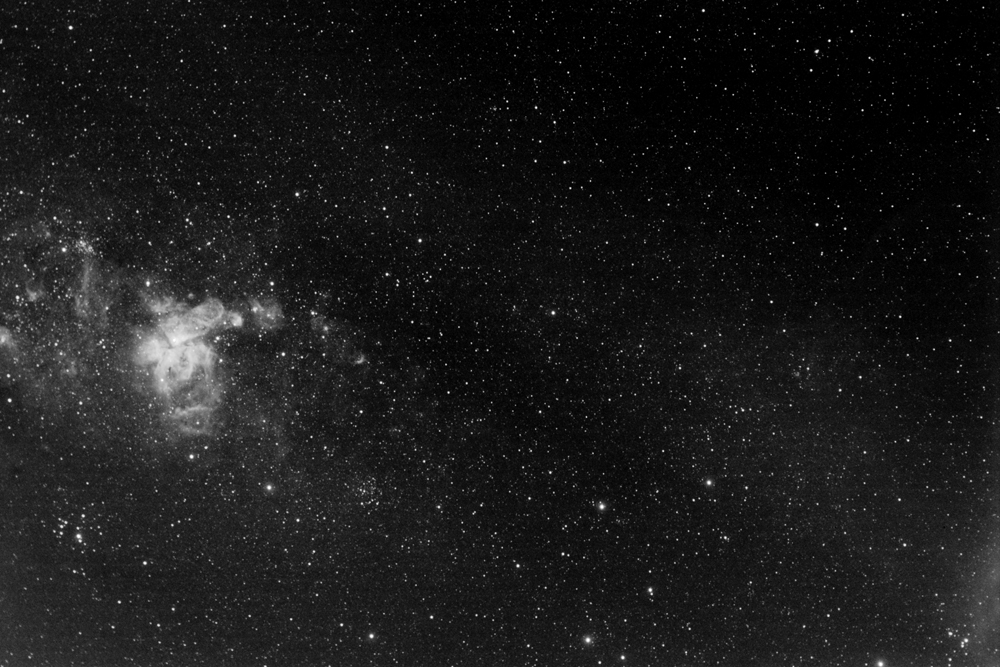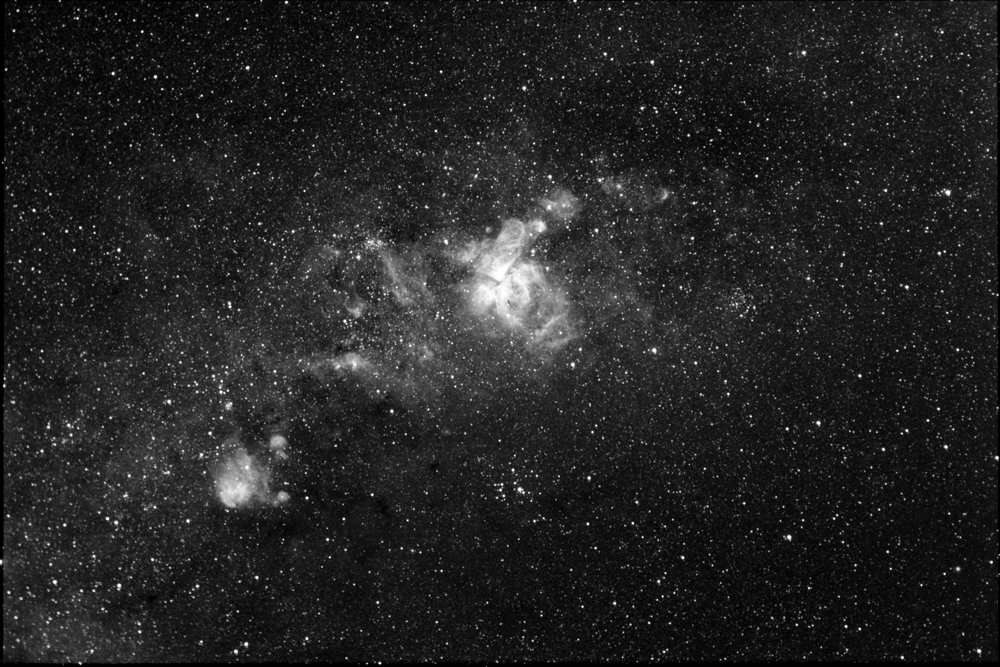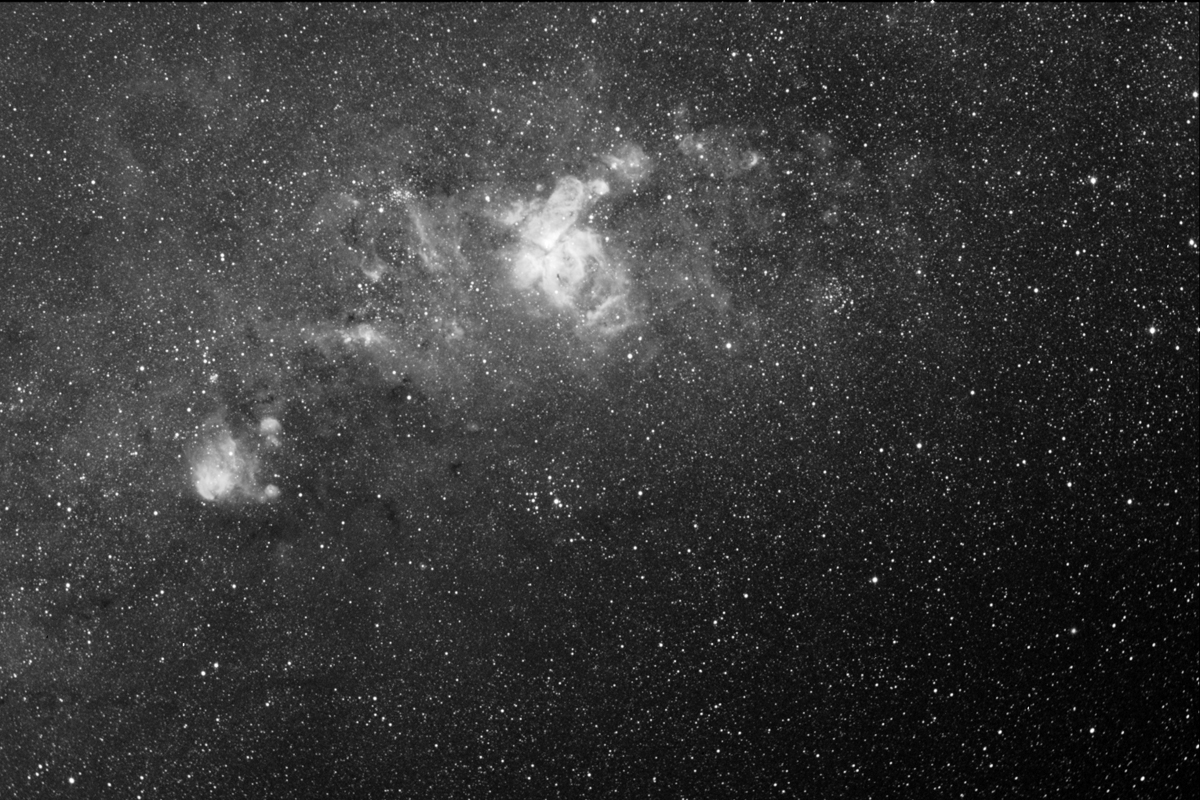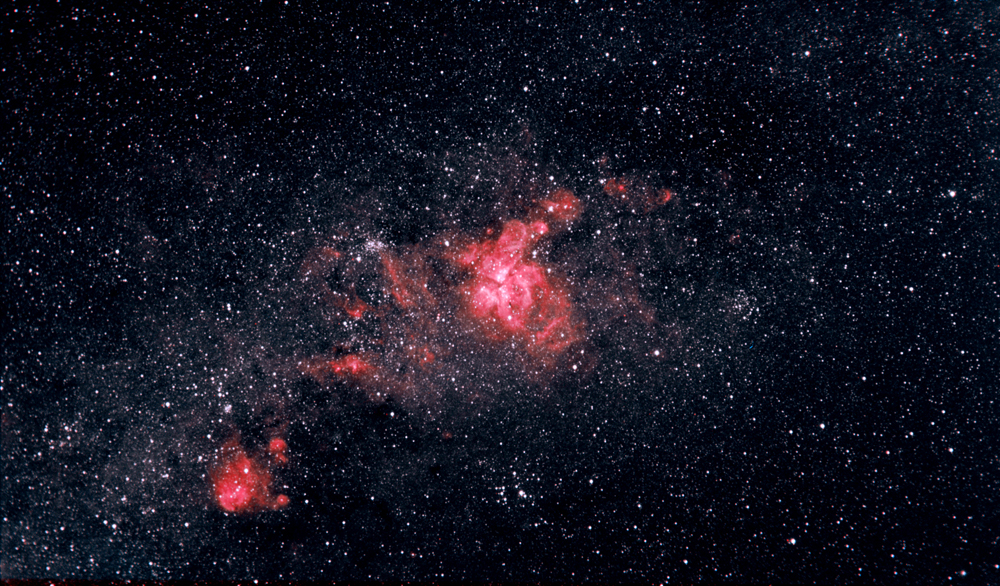
Combination of 10, 3 minute exposures using an H-alpha filter.
SBIG ST-8XE CCD. 35mm Nikon lens at f/4.
Following Vela to the south-east is the spectacular constellation of Carina. Between late summer and early winter, this constellation, with its brilliant Milky Way, many nebulae and dozens of open clusters, provides endless hours of pleasure for sweeping with binoculars or a wide field telescope. Much brighter than Cygnus, this region is one of the showpieces of the southern sky.

The spectacular nebula to the left of the image is NGC 3372 the Eta Carina Nebula. To the lower left of NGC 3372 is the bright open cluster IC 2602 . To the lower right of the nebula is another bright open cluster NGC 3114 .

This image is centred on NGC 3372, and shows just how much nebulosity there is in this region. The large bright patch to the lower left of NGC 3372 is IC 2948.
The next photograph shows the Milky Way between Vela and the Southern Cross. This means that almost all of Carina is visible. The exception is the very western region, which includes the very bright star, Canopus. This star is just out of view to the right.


In the above image, the H-alpha image was used as the red channel, the SII image as the green channel, and a synthetic blue channel was made by blending these two images.